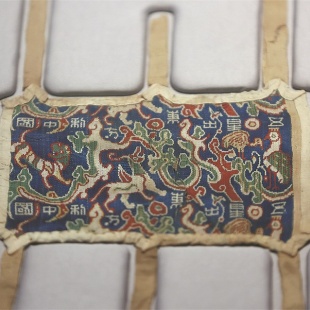Ancient heritage highlights Xinjiang's key national unity role


Unity and diversity
Archaeology has also provided vital evidence of how central dynasties in ancient China governed the Xinjiang area, thus consolidating national unity, Dang added.
In Jimsar county, Changji Hui autonomous prefecture, excavations at the Tang Dynasty (618-907) Beiting ruins continue to provide a new understanding of this trade hub. The ruins, also known in the past as Beshbaliq, were inscribed on the World Heritage List in 2014 as part of Silk Roads: the Routes Network of Chang'an-Tianshan Corridor.
Guo Wu, a researcher at the Chinese Academy of Social Sciences' Institute of Archaeology, who led the excavations, said: "This was the largest ancient city on the northern slopes of the Tianshan Mountains from the 7th to 14th centuries. From excavations of the city gates, Buddhist temples, streets and waterways, we have gradually pieced together its layout to gain an understanding of Beiting's extraordinary political status in northern Xinjiang."
The Beiting Protectorate was established in the city during the Tang Dynasty as a center to effectively govern northern Tianshan to ensure stability and prosperity of the Silk Road.
"Our new findings show that the central dynasty's governance system was introduced to the city," Guo said.
For example, broken pieces of pottery bearing the characters bei tian si, which translates as "a temple to show mercy", were unearthed in a core area of the Beiting ruins in 2021.
The findings show that even frontier areas such as Beiting were not neglected in extending the national system of governance.
The ruins of temples show that their construction methods and designs bear a close resemblance to those used for their counterparts on the plains of central China.
"The grandeur of the unearthed ruins also matches historical findings that Tang rulers spent a huge amount of their wealth and energy to safeguard this gateway leading to the west," Guo said. "The site also inspires us to understand the importance of a shared community in China in a modern context."
At the Kiyak Kuduk beacon towers site in Yuli county, Bayingol Mongolian autonomous prefecture — one of China's top 10 new archaeological findings in 2021 — a group of frontier posts yielded hundreds of documents and letters on subjects ranging from politics, the military, and the economy, to culture, religion and many other themes. These findings further reflect the Tang rule in the region.
Handwritten notes from Tang soldiers found at the site also document their personal lives.
Hu Xingjun, the leading archaeologist from the Xinjiang Institute of Cultural Relics and Archaeology working at the site, said: "The findings provide crucial references for us to discover how the Tang Dynasty managed its borderlands and how transportation along the Silk Road was ensured by the central government at the time. Many gaps in historical documents are thus filled."
Rule of Xinjiang by central dynasties dates back way beyond the Tang Dynasty, with the Protectorate of the Western Regions established during the Han Dynasty (206 BC to AD 24). However, scholars have still to locate the exact location of the protectorate.
Nonetheless, in the past five years, at the Zorkut site in Luntai county, Bayingol, unearthed ruins of grand architecture, high terraces, and three layers of city foundations indicate its core status during the Han Dynasty.
Xinjiang was long known as a place where different religions coexisted, and archaeologists have uncovered more evidence of this.
The newly discovered Tangchaodun site in Qitai county, and the Xipang site in Turpan, both of which date from the Tang Dynasty to the Yuan Dynasty (1271-1368), are arguably the best evidence of such cultural exchanges.
Nestorian Church ruins were excavated at both sites, along with manuscripts written in various languages along the Silk Road, including Chinese, ancient Uygur script and Syriac.
Known as jingjiao in ancient Chinese documents, the Nestorian Church, a branch of Christianity that originated in present-day Syria, was once popular in China. Ruins of a Buddhist temple and even a Roman-style bath were also found at the Tangchaodun site.
- Chinese, Mongolian militaries to hold joint exercise
- Bonded zone in Horgos attracts foreign companies
- Horgos Port channels fresh Chinese fruit to Kazakhstan
- Earthquake rattles Xinjiang; no injuries or damage
- Seventh Belt and Road Teenager Maker Camp and Teacher Workshop (China-Central Asian Project) opens in Xinjiang






































